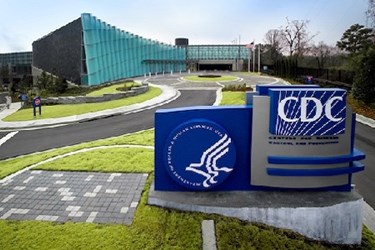CDC Releases Public Atlas On Salmonella Serotypes
By Laurel Maloy, contributing writer, Food Online

DNA sequencing enables identification of more Salmonellosis subtypes and identification of new outbreaks more quickly
In an unprecedented enterprise, the U.S. Centers for Disease Control and Prevention (CDC) has released an online report called Atlas of Salmonella in the United States, 1968-2011. Published online on Wednesday, interested parties can view the full 248 page report, or individual reports with specific information on each of 32 serotypes. This compilation is the result of 42 years of data collection and is highly organized, utilizing graphs and maps to organize data:
Figure 1: Reveals periodic occurrences, averaging three month periods in order to reduce erratic fluctuations in the data.
Figure 2: Displays the individual human isolates by specimen source, listing six different types of sources.
Figure 3: Explains the distribution of isolates by month, by specimen, for each of 3 broadly-defined age groups.
Figure 4: Provides the same information as Figure 3, by year, per 100,000 persons.
Figure 5: Breaks down the data further by median age and sex for each month of the year.
Figure 6: Provides the same information as Figure 5, by year.
Figure 7: Demonstrates the distribution of isolates by smaller age groups and sex, expressed in percentages.
Figure 8: Summarizes data for non-human sources for the entire 42 years.
Figures 9 through 14: Utilizes maps with U.S. state and county designations as of Aug 1, 2012. Averaging rates per 100,000 persons, the data was based upon 2011 U.S. census data. The information is broken down into groups of years and categorized into four levels corresponding to quarterly reports.
Check out how light is detecting microbes and improving food safety
The information is presented in the same manner across each of the 32 serotypes. The most comprehensive report of its kind to date, the CDC acknowledges the limitations on the data. Many persons do not seek medical care, cultures are not taken at the time of illness, and culture results go unreported to public health officials. In fact, the CDC estimates that 29.3 salmonellosis cases occur for every one that is laboratory confirmed. Another limitation is that overall, 7.6 percent of specimens have missing or incomplete serotype information. The CDC reports that out of the 2,500 individual serotypes, fewer than 100 are responsible for the vast majority of infections, with these 32 being the most prolific.
The Deputy Director of CDC’s Division of Foodborne, Waterborne, and Environmental Diseases, Robert Trauxe, MD has high hopes regarding the future of Salmonella outbreaks. He is optimistic that the data will lead researchers and other experts to ways to reduce infections going forward. He says, “The more we understand Salmonella, the more we can make progress in fighting this threat all along the farm-to-table chain.”
Salmonella is the primary cause of foodborne illness leading to death in the U.S. According to the CDC, Salmonellosis sickens an estimated 1.2 million people each year. More than 23,000 are hospitalized and approximately 450 deaths occur annually.
